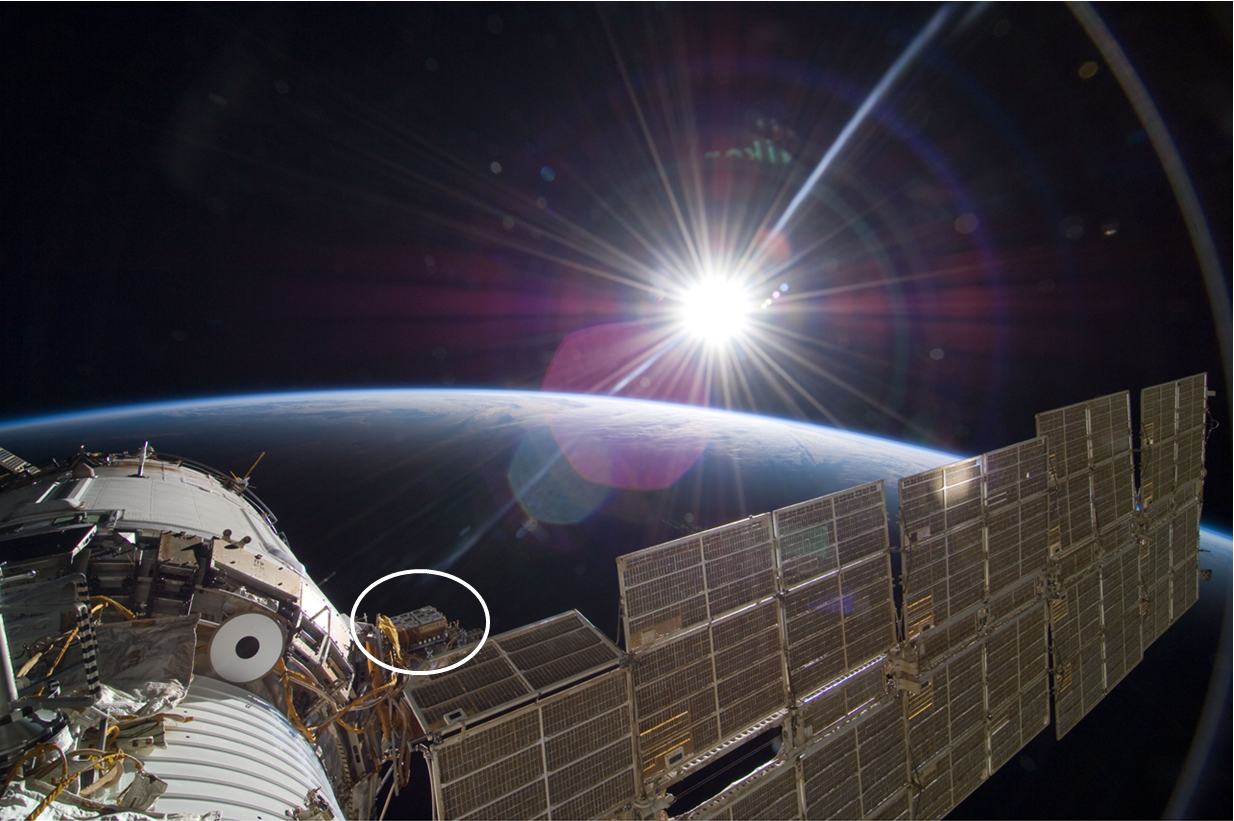Low Earth Orbit Experiment
Solar ultraviolet radiation is the main driving force behind chemical evolution in the solar system. Numerous ground-based experimental programs are devoted to studying the photochemistry of molecules in gaseous or solid phases, or of volatile molecules condensed at very low temperatures. Nevertheless, the validity of such work and its extrapolation to extraterrestrial environments can be questioned until it has been confronted with similar experiments carried out in space, with exposure to the extended solar spectrum, particularly in the short wavelength range, below 200 nm, which is difficult to reproduce in the laboratory. Yet understanding chemical evolution in astrophysical environments containing organic and inorganic matter (comets, meteorites, Mars, Titan, Europa, interstellar medium) requires such studies.
Our aim is to compare the photochemical behavior of organic and inorganic molecules measured in the laboratory, with the "field reality" that these experiments are supposed to represent: direct exposure to solar radiation during experiments carried out in Earth orbit. The ultimate aim is to improve the laboratory experiments, and obtain quantitative measurements of the photolysis of selected molecules (photolysis products and cross sections in particular).
LISA has already coordinated experiments outside a Russian capsule (FOTON - BIOPAN platform) and the International Space Station (ISS - EXPOSE platforms) (Figure 1 and Table 1). Different types of in-orbit sample exposure devices have been developed specifically for these campaigns. These projects are particularly concerned with the study of molecules of cometary interest (in preparation for interpretation of the results of the ROSETTA mission), the chemistry of Titan (Cassini Huygens mission), and organic chemistry in the Martian environment (Curiosity, Rosalind Franklin).
A new generation of exposure platforms has emerged from these ISS campaigns, for which sample analysis was only possible before their departure into orbit and after their return to Earth. We wanted to integrate in situ monitoring of sample evolution directly in orbit, using infrared spectrometry. The IR-COASTER instrument (designed and built at LISA in partnership with CNES) will be the first exposure experiment to incorporate an on-board infrared spectrometer for monitoring samples in orbit (Figure 2). This experiment has been designed on a basis that could easily be transposed to a CubeSat in the future, should the opportunity arise.
In addition to UV radiation, we will be looking to combine the effect of UV with that of charged particles (solar wind and cosmic rays). This study requires orbits different from that of the International Space Station, which will make it impossible to return samples to Earth. The CubeSat solution could therefore be adapted. But beyond Earth orbit, the Moon (orbit or surface) could in the years to come present prime opportunities for studies of sample exposure to the full range of energetic radiation from astrophysical environments. A feasibility study phase for such an experiment on the Moon's surface is currently underway with CNES, in preparation for future lunar experiments. This is the Vitrine project. This will feature a new breakthrough in exposure experiments: the ability to prepare and expose icy samples, relevant for studies of cometary and interstellar ices, or the icy satellites of giant planets.

Figure 1 : The EXPOSE platform outside the ISS, used by LISA for a series of photochemistry experiments in Earth orbit.
Table 1: Experiments in which LISA is involved, past, present or in preparation
| EXPERIENCE | SUPPORT | LANCEMENT | DUREE D'EXPOSITION |
| UVolution | BIOPAN (capsule FOTON) | Septembre 2007 | 12 jours |
| PROCESS | EXPOSE-E installé sur l'ISS, module européen | Février 2008 – Aout 2009 | 18 mois |
| AMINO | EXPOSE-R installé sur l'ISS, module russe | Mars 2009 – Mars 2011 | 24 mois |
| PSS | EXPOSE-R2 installé sur l'ISS, module russe | Juillet 2014 - Mars 2016 | 16 mois |
| IR-COASTER | ISS, plateforme Bartolomeo, module européen | Octobre 2024 | 12 mois |
| Space MoonTan | Surface lunaire | TBD | TBD |

Figure 2 : Left: photo of the flight model of the IR-COASTER experiment before its departure for the ISS. Middle and right: digital models of the instrument showing the layout of the hardware and sample carousel. The FTIR spectrometer is the light gray part in the center figure.
Contact LISA: Hervé Cottin
Publications
- Herve Cottin, Julia Michelle Kotler, Daniela Billi, Charles Cockell, René Demets, Pascale Ehrenfreund, Andreas Elsaesser, Louis d’Hendecourt, Jack JWA Van Loon, Zita Martins, Silvano Onofri, Richard C Quinn, Elke Rabbow, Petra Rettberg, Antonio J Ricco, Klaus Slenzka, , Olivier Poch, Kafila Saiagh, Fabien Stalport, Akihiko Yamagishi, Hajime Yano, Benjamin A Klamm, Space as a tool for astrobiology: review and recommendations for experimentations in Earth orbit and beyond, Space Science Reviews, 209, 83-181, 10.1007/s11214-017-0365-5, 2017
- Baratta, G.A., Chaput, D., Herve Cottin, Cascales, L.F., Palumbo, M.E. and Strazzulla, G., Organic samples produced by ion bombardment of ices for the EXPOSE-R2 mission on the International Space Station, Planet. Space Sci., 118, 211-220., 10.1016/j.pss.2015.08.011, 2015
- Cottin, H. and Rettberg, P. (2019) EXPOSE-R2 on the International Space Station (2014–2016): Results from the PSS and BOSS Astrobiology Experiments. Astrobiology 19, 975-978.
- Chaouche-Mechidal, N., Stalport, F., Caupos, E., Mebold, E., Azémard, C., Szopa, C., Coll, P. and Cottin, H. (2023) Effects of UV and Calcium Perchlorates on Uracil Deposited on Strontium Fluoride Substrates at Mars Pressure and Temperature. Astrobiology 23, 959-978.

